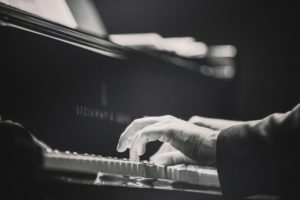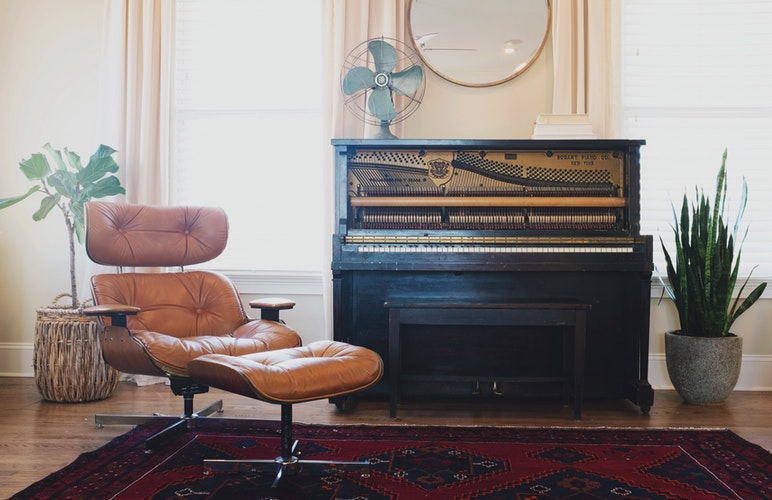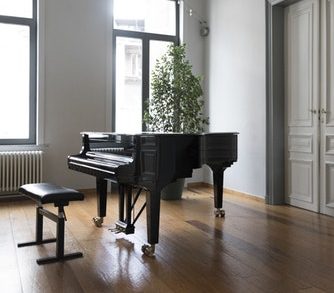The piano is one of music’s most versatile and prominent tools to the singer-songwriter. With such versatility however, comes great challenge when miking a piano for home recordings.
Piano Miking Summit (Sweetwater) : https://t.co/bMzOeWSh3f Tips from the Pros. pic.twitter.com/IOMyPS8Ahw
— reaktorplayer (@reaktorplayer) March 16, 2018
The piano can be a daunting instrument to record for the beginner engineer.
Being such a massive instrument, capable of producing a wide range of sounds, it can be difficult to know where to start. Having spent a number of years tracking all kinds of pianos from tiny uprights to nine-foot grands, I’ve collected a number of techniques to consider when tracking this instrument.
What’s your Piano’s Role?
I’ve mentioned this before when writing on acoustic guitar and miking drums, but it’s worth mentioning again.
Before you even begin miking a piano think about the role this instrument will play in the track. Not only is the piano a polyphonic instrument capable of filling the frequency spectrum. It’s also considered a percussive instrument with strong rhythmic content.
Therefore, it’s important to think about how your piano track is going to enhance your song and to what degree. Do you want your piano to have a more percussive sound or will it be more lush and full of harmonic content?
Is your musician only going to play a simple melody and if so is it a lead part? These are all important questions to ask in the early stages. Answering them will give you an idea of the best way to go about miking a piano for your song.
Miking a Piano at the Sweet Spot
Every instrument has a place that serves as a good starting point for microphone placement known as the “sweet spot”.
The piano is no exception but it’s sweet spot should be taken with a grain of salt. All pianos projects sound in a unique fashion so there’s no real “one size fits all” solution.
However, I prefer to start miking a piano in the place where the low and high strings cross each other. This tends to be two thirds down the length of the piano, away from the hammers. However, you’ll have to open up the piano to see exactly where this is.
Whether you are close miking or far miking a piano, being in line with this point allows you to capture almost all notes the piano produces equally.
Rhythmic, Harmonic or Melodic
In its simplest form, I like to think of the piano as having three major roles. The first is harmonic, offering support to the music, usually in the form of chords or a pad like part. Second, rhythmic is more aggressive and percussive in nature. Finally melodic piano, such as a lead part or solo is a combination of the two.
Miking a piano close to the hammers will give you a thinner, more percussive sound. On the contrary, moving away from them will result in more lush harmonic content being captured.
When you’re miking a piano near the sweet spot you won’t capture much of the hammers. This can be a good thing and a classical piece or a ballad.
However, for a rock song your piano may need to have a bit more bite to it and placing a space pair close to the hammers can help you achieve this. This leads me to the next point of how many mics should be used when miking a piano.
Mono, Stereo and Beyond
Stereo Miking
The piano is such a massive instrument physically, with the spectrum of notes taking up a large space. Because of this, using at least two microphones is best when close miking a piano.
When stereo miking I prefer using an X/Y or ORTF technique, angled across the strings at the sweet spot. Alternatively, I will use a spaced pair closer to the hammers but not directly above them. This gives a greater spread and more rhythmic feel to the piano being captured.
Check out the video below to get a better idea of the stereo miking options that are possible along with some helpful tips on microphone choice.
The More (Microphones) The Merrier
To get the best of both worlds, use a spaced pair near the hammers and a single microphone at the sweet spot.
This is a great approach if you aren’t quite sure the role of your piano. It gives you options to shape the sound down the road, blending between the two pacements.
It is also an excellent approach in cases where the piano is meant to be the focal point of the song. In cases where the piano is the only instrumentation I would recommend this method as well.
Using One Microphone
If you aren’t able to use multiple microphones, miking a piano at the sweet spot with a single microphone will suffice. In this case, angling the microphone towards or away from the hammers can pronounce them more or less.
Moving further away from the piano with a single microphone can also help capture a greater image of it.
Miking a Piano Room
While we’re talking about microphone placement, the room is also an important aspect of how an instrument sounds.
Try placing one or two microphones farther away from the piano to capture the room it’s being recorded in.
This photograph will give you some idea as to the sheer scale of studio 2 @abbeyroadstudios
Following in the footsteps of legends !!#Scale #Photograph #Steinway #Piano #Recording #Studio #Studio2 #AbbeyRoad #Composition #NewMusic #Style #Fun #Legends pic.twitter.com/8DMP5KVJUR
— Alina K (@alinakmusic) March 13, 2019
Although not everyone may have the microphones, inputs or space to do so, miking a room can have amazing results on the piano’s sound. This is especially important when the piano is being recorded in a large space that has an enhancing tone.
Grand Piano vs. Upright Piano
There are far more types of pianos than just “upright or grand”. However, understanding some of the key differences between these two will help you when approaching the many other models out there.
Upright Piano
One of the most popular misconceptions when recording upright piano is to either raise the top lid and place mics there or open up the bottom of the piano for miking.
This definitely could work but it comes with its setbacks, due to the instruments construction. Miking an upright piano from the top will give you lots of hammer noise but not much of the piano’s actual resonance.
Miking the lower half of a piano will give you more resonance but can result in noise from the musician moving on their bench or sound from the sustain pedal.
What many people don’t realize is that a large part of the instruments resonance comes from the soundboard on the back of the piano.
So, if you have the room to pull a piano away from the wall try miking it from behind, near the sweet spot. This gives a clean sound that’s isolated from the instruments mechanical noise.
The downside however can be a lack of definition from the hammers. If this is the case, once again try placing microphones by the hammers in addition to those at the back.
Grand Piano
The size of the grand piano can make it difficult to capture. However, this also makes it much easier to stay away from the instruments mechanical noise.
In this case you want to mic it mainly from above as the bottom of the piano is where a lot of the pedal noise comes into play. Keep room mics high as well too avoid noise from this side of the piano.
Once again, sound from the hammers can help the tone but you should also be wary of action noises when doing so.
How high the lid is on the grand will also have an impact on how the instrument sounds in the room. I normally prefer to have it wide open to allow for greater resonance and better working space.
If I have the luxury of extra microphones, I may place an X/Y pair a couple feet back from the piano and pointed at the underside of the grand’s lid. This can produce some bright sounding reflections to add to the mix.
Conclusion
The piano is a gorgeous instrument that can serve melodic, harmonic or rhythmic roles in a track. Because of this, before miking a piano it’s purpose in your track must be considered.
The best go to approach is to place a couple microphones near the sweet spot and moving them closer to the hammers as more rhythmic content is required.
Finally, there are some major differences between grand and upright designs that should be taken into consideration to avoid noise from the instrument’s mechanics.
By now you should have a strong understanding of the best ways to go about miking a piano. Don’t let that stop you from experimenting and try to find your favourite way to record this gorgeous instrument.
If you’d like additional tips on home recording check out some of the other posts on our blog.







